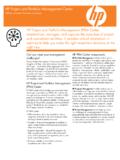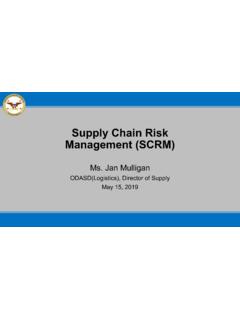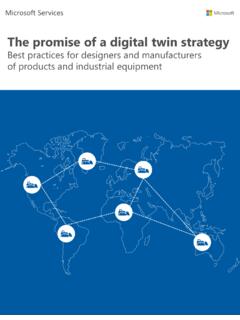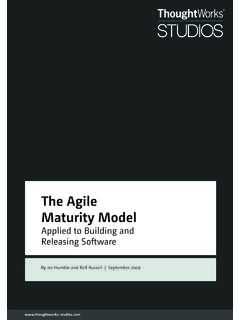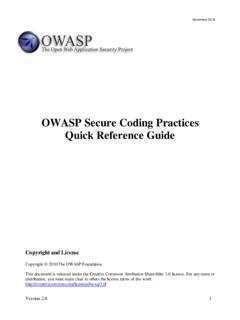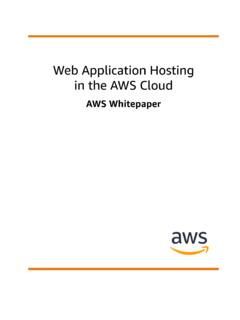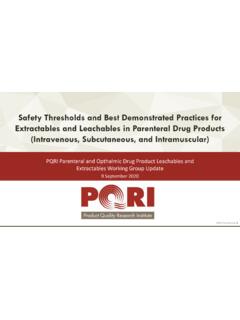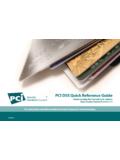Transcription of Recommendation for Key Management - NIST
1 NIST Special Publication 800-57 Part 1 Revision 5 Recommendation for Key Management : Part 1 General Elaine Barker This publication is available free of charge from: C O M P U T E R S E C U R I T Y NIST Special Publication 800-57 Part 1 Revision 5 Recommendation for Key Management : Part 1 General Elaine Barker Computer Security Division Information Technology Laboratory This publication is available free of charge from: May 2020 Department of Commerce Wilbur L.
2 Ross, Jr., Secretary National Institute of Standards and Technology Walter Copan, NIST Director and Under Secretary of Commerce for Standards and Technology Authority This publication has been developed by the National Institute of Standards and Technology (NIST) in accordance with its statutory responsibilities under the Federal Information Security Modernization Act (FISMA) of 2014, 44 3551 et seq., Public Law ( ) 113-283. NIST is responsible for developing information security standards and guidelines, including minimum requirements for federal information systems, but such standards and guidelines shall not apply to national security systems without the express approval of appropriate federal officials exercising policy authority over such systems.
3 This guideline is consistent with the requirements of the Office of Management and Budget (OMB) Circular A-130. Nothing in this publication should be taken to contradict the standards and guidelines made mandatory and binding on federal agencies by the Secretary of Commerce under statutory authority. Nor should these guidelines be interpreted as altering or superseding the existing authorities of the Secretary of Commerce, Director of the OMB, or any other federal official.
4 This publication may be used by nongovernmental organizations on a voluntary basis and is not subject to copyright in the United States. Attribution would, however, be appreciated by NIST. National Institute of Standards and Technology Special Publication 800-57 Part 1, Revision 5 Natl. Inst. Stand. Technol. Spec. Publ. 800-57 Part 1 Rev. 5 , 170 pages (May 2020) CODEN: NSPUE2 This publication is available free of charge from: Certain commercial entities, equipment, or materials may be identified in this document in order to describe an experimental procedure or concept adequately.
5 Such identification is not intended to imply Recommendation or endorsement by NIST, nor is it intended to imply that the entities, materials, or equipment are necessarily the best available for the purpose. There may be references in this publication to other publications currently under development by NIST in accordance with its assigned statutory responsibilities. The information in this publication, including concepts and methodologies, may be used by federal agencies even before the completion of such companion publications.
6 Thus, until each publication is completed, current requirements, guidelines, and procedures, where they exist, remain operative. For planning and transition purposes, federal agencies may wish to closely follow the development of these new publications by NIST. Organizations are encouraged to review all draft publications during public comment periods and provide feedback to NIST. Many NIST cybersecurity publications, other than the ones noted above, are available at Comments on this publication may be submitted to: National Institute of Standards and Technology Attn: Computer Security Division, Information Technology Laboratory 100 Bureau Drive (Mail Stop 8930) Gaithersburg, MD 20899-8930 Email: All comments are subject to release under the Freedom of Information Act (FOIA).
7 NIST SP 800-57 PART 1 REV. 5 Recommendation FOR KEY Management : PART 1 GENERAL ii This publication is available free of charge from: Reports on Computer Systems Technology The Information Technology Laboratory (ITL) at the National Institute of Standards and Technology (NIST) promotes the economy and public welfare by providing technical leadership for the Nation s measurement and standards infrastructure. ITL develops tests, test methods, reference data, proof of concept implementations, and technical analyses to advance the development and productive use of information technology.
8 ITL s responsibilities include the development of Management , administrative, technical, and physical standards and guidelines for the cost-effective security and privacy of other than national security-related information in Federal information systems. The Special Publication 800-series reports on ITL s research, guidelines, and outreach efforts in information system security, and its collaborative activities with industry, government, and academic organizations. Abstract This Recommendation provides cryptographic key- Management guidance.
9 It consists of three parts. Part 1 provides general guidance and best practices for the Management of cryptographic keying material, including definitions of the security services that may be provided when using cryptography and the algorithms and key types that may be employed, specifications of the protection that each type of key and other cryptographic information requires and methods for providing this protection, discussions about the functions involved in key Management , and discussions about a variety of key- Management issues to be addressed when using cryptography.
10 Part 2 provides guidance on policy and security planning requirements for government agencies. Part 3 provides guidance when using the cryptographic features of current systems. Keywords archive; authentication; authorization; availability; backup; compromise; confidentiality; cryptographic key; cryptographic module; digital signature; hash function; key agreement; key Management ; key recovery; keying material; key transport; private key; public key; secret key; trust anchor.










